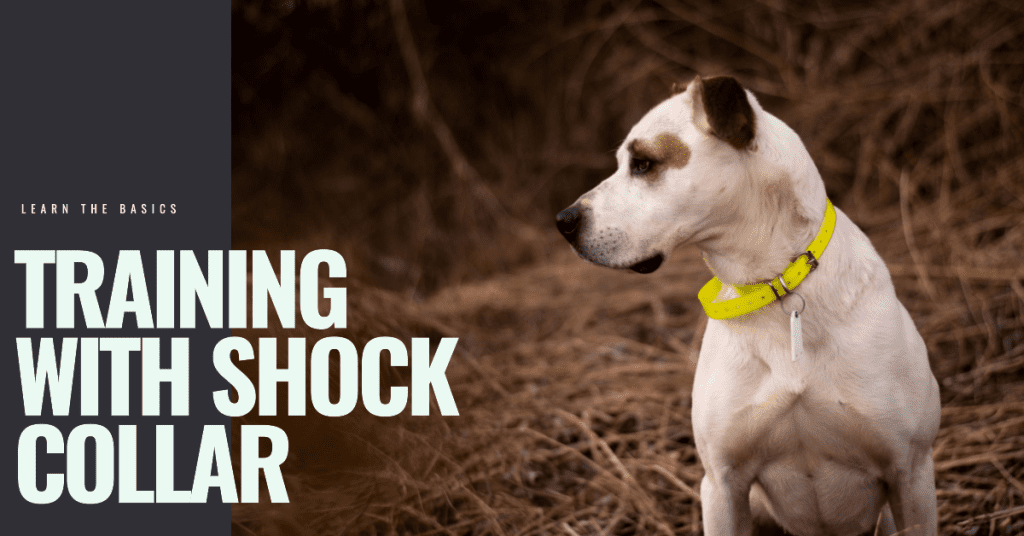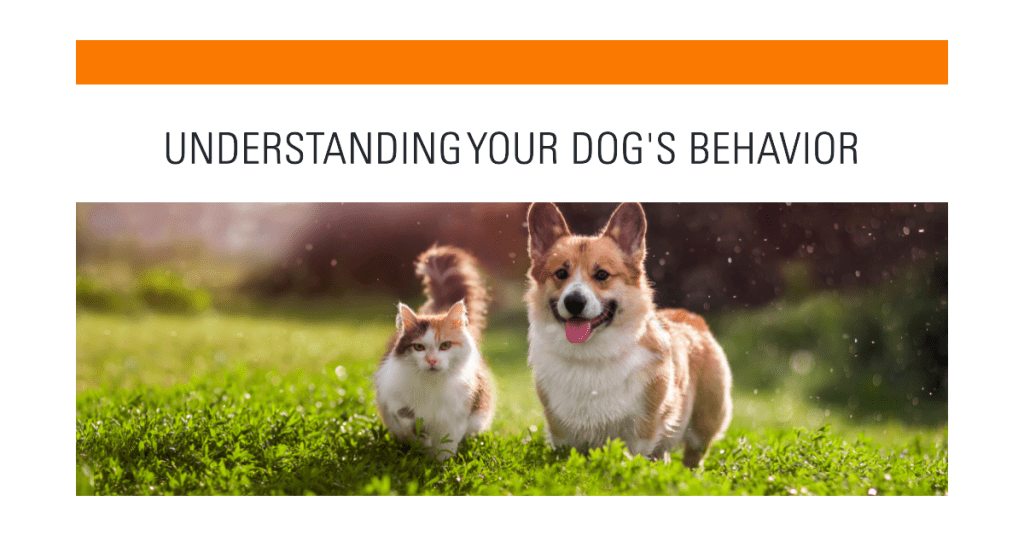History shows that the inhumane use of shock collars can cause physical and emotional harm to dogs. Thus, responsible use is key for the ethical implementation of shock collars. Solving a dog's behavior is like trying to solve a Rubik's cube blindfolded – difficult and potentially painful if done wrong.
So here is how to use shock collar for training your dog!
Preparation Before Using Training Collar
To prepare before using a shock collar for training your dog, you need to familiarize yourself with the device, understand your dog's behavior, choose the right stimulation level, and pick the appropriate time for training. These sub-sections aim to provide you with insights and solutions to ensure effective and harmless shock collar training.
Familiarizing with the shock collar


Before using a shock collar, it's essential to become familiar with its features and functions. You should be aware of the intensity levels and how to adjust them. Also, check if the collar fits your pet properly.
Train your dog before activating the shock feature. Treat-based positive reinforcement training can help the dog associate good behavior with positive results. This prevents excessive or improper use of remote training collars.
To ensure the safety and effectiveness of shock collars, consult a professional animal behaviorist to decide if this technology is suitable for your situation.
Understanding the dog’s behavior


To use a shock collar on a dog, you must know their behavior. This makes sure they don't get punished too much and the training is positive. By understanding their nature and responses, you can choose an appropriate level of shock.
Every pup has different learning abilities, temperaments, and reactions to stimuli. For example, some may show aggression when provoked, while others might be anxious. Knowing this can help you decide the right level of shock in certain situations.
Breaking trust or mistreating your dog can damage their mental health. To encourage better behavior, figure out what motivates them – food, play, walks.
Studies show that positive reinforcement methods like clicker training are more effective at changing behaviour than punishment-based techniques.
Choosing the appropriate stimulation level
It's essential to pick the right level of shock for your pup. Here are five points to consider:
- Consult a pro or vet first.
- Test the level on yourself.
- Start with the lowest and increase if needed.
- Look out for signs of discomfort.
- Switch to another method if the shock isn't suitable.
Choosing the right level is key to the success and safety of shock collar use. Understand the features, like its range and battery life, to ensure the best performance. With proper prep and diligence, you'll be making a positive impact on dog's behavior in no time.
Finding the right shock level is like Goldilocks testing porridge – too low won't work, too high will fry your furry friend.
Selecting the right time to train the dog
Choosing the best time to use a shock collar is key for successful dog training. It's especially important to create positive reinforcement and make sure your pet feels safe. The optimal time is during activities, such as walking or obedience training, in calm and neutral places away from sudden stimuli.
When introducing the collar, give your pet the chance to get used to it before adding the stress-inducing mechanism. Shock collars should be part of a bigger plan that includes traditional behavior modification tools, like positive reinforcement with treats and praise, not physical punishment.
Choose a shock collar that fits your pet's size and weight – for comfort and effectiveness.
Remember, for long-term behavioral changes, rely on rewarding good behavior rather than negative incidents. This builds up trust between you and your pet.
Correctly Fitting and Using the Dog Training Collar
To correctly fit and use a shock collar for training, you need to ensure it fits the dog properly and avoid overuse. Familiarizing your dog with the collar and identifying the appropriate use of the collar for reinforcement are equally important. To achieve these goals, we will discuss several sub-sections: ensuring the proper fit of the collar, familiarizing the dog with the collar, avoiding overuse of the shock collar, and identifying the appropriate use of the collar for reinforcement.
Ensuring the proper fit of the collar
Fit the shock collar right by following these 6 steps. This will ensure it works properly and won't hurt your pup.
- Measure your dog's neck using tape or thread.
- Compare your pet's neck size to the manufacturer's size chart.
- Wrap the collar around their neck, leaving 2 fingers' space.
- Make sure the contact points are firmly on the skin.
- Test the collar by lightly tugging it.
- Check the tightness each time you use it.
Be careful not to over- or under-tighten the collar. Also, consider how long it should be worn. Don't leave your dog unattended with the shock collar on. Always read instructions before using tools on your pet. Get them used to the collar slowly.
Familiarizing the dog with the collar
To start training your pup with a shock collar, it's important to get them familiar with it.
- Show the collar to your pup and let them smell it.
- Place the unactivated collar around their neck briefly, then take it off.
- Repeat this step while giving them commands like ‘sit' or ‘stay'.
- Activate its audible tone and reward if your pup responds correctly.
- Finally, activate the lowest static impulse and adjust accordingly.
Be sure to make adjustments to the collar for comfort and observe your pup's behavior and expressions.
Also, don't leave the collar on your pup for long periods or when they're active. They might try to remove it themselves and get hurt.
A client of ours had trouble with their rescue greyhound chasing cars. But, with shock collar training and family support, the pup now responds positively even without wearing one.
Don't overdo it with the shock collar or your pup might end up like Frankenstein's monster.
Avoiding overuse of the shock collar
Be aware of the potential abuse when using a shock collar. Overstimulating your pup can cause harm – to their physical and mental health. It's best to follow the manufacturer's instructions and don't use it for longer than necessary.
Don't just rely on the collar as your main training tool. Positive reinforcement techniques with the help of collars can achieve quicker results. Never use it as a punishment.
Take note of how long you need to use it during training sessions. Longer sessions are proven to be more beneficial than shorter ones. Finally, put yourself in your pup's paws – would you like to be shocked over and over? If not, reduce or stop using it.
A colleague once shared an experience with a client – the pup got hot spots because the collar was left on all day without supervision. This could have been avoided if they had followed protocol and only used it sparingly during specific times.
Identifying the appropriate use of the collar for reinforcement
To utilize a shock collar as reinforcement, consider these factors:
- Evaluate the pup's behavior and decide if a shock collar is necessary, or if other techniques will work.
- Ensure the collar fits properly; it cannot be too loose or too tight.
- Pick an appropriate level of stimulation, beginning at the lowest. Monitor the pup's reaction as you gradually increase the level.
- In addition to shock collar use, implement positive reinforcement. Give rewards and praise for good behavior.
Remember, shock collars should not replace training. Always aim to encourage desirable behavior in dogs.
It may be beneficial to get advice from a professional dog trainer who has experience with shock collars.
As there are numerous remote collars on the market, product reviews can help you make the best choice. Consider factors like durability, battery life, range, and features.
Using dog shock collars with other positive reinforcement techniques and training devices will help pet owners reinforce desirable behaviors while keeping pups safe and healthy.
Start shocking your way to a better-behaved pup!
Steps to Effectively Train Your Dog Using a Shock Collar
To effectively train your dog using an electric collar, here are some key steps with solutions: Start by teaching your dog basic commands, and then use positive reinforcement in combination with the shock collar. Creating clear boundaries and expectations is also important, and the collar can address specific behavior issues like barking and jumping.
Teaching basic commands
Train your pup in commands! Establish a strong bond between you and your pup by teaching basic actions like “sit,” “stay,” and “come.” Here's how:
- Pick the perfect time and place.
- Use verbal cues and physical gestures.
- Start with the easiest command.
- Reward good attempts.
- Optimize shock therapy, if needed.
Be sure to consult professionals with experience in shock collars. With consistency and rewards, you can become a master in dog training and your dog learn what to do on your command.
Using positive reinforcement in combination with the shock collar
When training a dog with an electronic collar, it's important to use positive reinforcement. Praise, treats, or playtime can be given as rewards for good behavior. This mixture of positive and negative reinforcement can be more effective and humane.
Introducing the collar to your pup and gradually increasing the intensity of the shock is essential. This will help them relate the sensation to their behavior, not fear the collar or trainer.
Shock collars are only suitable for some dogs, and should only be used with professional supervision. A qualified trainer can tell if it's appropriate for your pet's needs. For instance, hunting dogs need recall under tough circumstances, and professional hunters have used shock collars with positive reinforcement techniques.
By combining positive reinforcement and using a shock collar appropriately, you can train your pup and keep a strong bond between you and your four-legged friend.
Creating clear boundaries and expectations
Having a structured environment for your pup's schooling is key to using a shock collar the right way. Establish clear regulations and boundaries through consistent teaching, reinforce positive conduct, and set limits for bad ones. This'll let your dog understand what's expected of them.
Using a well-balanced dog training technique is key to setting clear expectations. Start with gentle orders, such as “sit” or “stay”, to lay the groundwork for future teaching. Encourage good behavior while discouraging bad reactions with reward-based methods.
Be patient throughout this process; every pup learns at its own speed. Stay consistent in body language and tone to show authority without physical punishment. This'll build trust between you and your pet.
Remember, the goal of shock collar training isn't to cause pain but rather to lead behavior toward desirable outcomes. By setting up peaceful boundaries and expectations, you can create a healthy relationship with your pet and get successful training results. Don't worry, your dog's electric shock therapy won't turn them into a superhero – unless being obedient is a superpower.
Addressing specific behavior issues with the collar
Shock collars can help you train your dog to behave. Identify which behaviors need addressing. Gradually introduce the collar and use positive reinforcement to encourage good behavior.
Reinforce positive actions like being quiet on command, instead of using the shock feature too often. Use the collar for negative reinforcement if necessary, but not excessively or inappropriately.
Train your dog step-by-step, with consistent and targeted training. Monitor their progress and adjust training as needed.
By following these tips, you can address problematic behavior in your dog. Positive reinforcement will strengthen the bond between you. This will ensure their safety and well-being.
Common Problems and Mistakes to Avoid When Using a Shock Collar to Train a Dog
To avoid making common mistakes when using a shock collar for training, follow the techniques. This includes making proper adjustments to the collar, using it at appropriate times, and following correct training techniques. Additionally, avoid applying too much force on the stimulation button, which can lead to excessive discomfort for your pet.
Making adjustments to the collar incorrectly
Making sure a shock collar is used correctly is very important. Here are some common mistakes pet owners make and how to avoid them:
- Wrong size: Accurately measure your pet's neck and use the right size.
- Too tight: Use a firm but comfortable tension on the collar.
- Loosened prongs: The prongs must touch your pet's skin to work. Don't loosen them too much.
- No testing: Test the collar before using it on your pet.
- Not clean: Clean the collar regularly, as dogs can get bacteria from licking.
It is important to be aware of different training options. Shock collars can make some pets anxious and can cause harm. Consider how often you will use it, as it depends on your pet's safety and comfort.
Don't rely on shock therapy as a lazy way of training – patience and care is key.
Using the collar too often or at inappropriate times
Excessive and imprudent use of electronic dog collars can lead to undesirable outcomes. It's essential to refrain from overusing it. If so, the consequences may include fear, anxiety, and aggression toward people and other dogs.
Using the collar when asserting dominance, disciplining, or punishing your pet for something it can't control is harmful. Similarly, shock collars on puppies or older dogs with health problems should be avoided.
Positive reinforcement should accompany shock collar usage. Otherwise, negative behavior in dogs can result. Therefore, relying solely on electronic collars isn't advised.
Shock collars can be effective tools; however, their limitations must be understood. A study shows that e-collars evoke more problematic than desirable behaviors in dogs trained solely with them in a field setting. So, pushing that button won't make the shock collar work any better.
Applying excessive force on the stimulation button
The intensity of the shock collar button is very important for training, but too much can cause big problems. Pressing the button too hard can hurt the dog and make them resist training – the opposite of the desired effect! Follow these tips to avoid overdoing it:
- Begin with low-intensity levels, then ramp up as needed.
- Observe your dog's reactions when higher intensity levels are used, and adjust accordingly.
- Never let emotions direct action. Don't press harder when frustrated or angry.
- Always keep an eye on your dog's location and body language before using the collar.
- If you're uncertain, get help from a professional trainer.
- Use vibration mode before shock collars, as they can be less harsh for some dogs.
Each pup is unique – what works for one may not work for another. Reading your pet's behavior gives insight into their response to the shock. Plus, remember that a shock collar isn't a replacement for positive reinforcement techniques such as praise or treats.
Pro Tip: Only use a shock collar if you have training and knowledge about how they work with dogs' behavior and have been shown how to use them correctly by an expert. If shock collars could talk, they would advise you to properly train your dog instead of relying solely on its electric shock abilities.
Not following proper training techniques in combination with the collar.
Dog owners must use appropriate techniques with shock collars or risk serious consequences. Incorrect usage, too much use, or too much force are all mistakes. People should understand proper techniques before training their dogs.
A mistake by novice owners is to use the shock collar with other upsetting stimuli. This confusing technique brings stress and anxiety. Instead, positive reinforcement, like treats, should be used with the shock collar to reduce fear.
It's essential to know that each dog is special. Observe your dog's behavior during training.
Remember: Use the shock collar attentively. Stimulation levels must be increased gradually, based on the dog's reaction. Sudden changes or high levels of stimulation can be damaging.
Conclusion – Shock Collar Training
In conclusion, responsible and ethical practices are necessary when using shock collars for dog training to ensure the animals' safety and well-being. Before starting shock collar training, familiarize yourself with its features and understand your dog's behavior to determine the appropriate stimulation level. Avoid common mistakes and overuse of the collar to prevent negative outcomes.
FAQ: How to Use Shock Collar for Training
What is a Shock Collar?
A shock collar is an electronic device that is typically used in dog training to provide a mild electric shock to a dog's neck via collar. The shock collar can be used to deliver a range of different levels of stimulation to a dog, including vibration, beeping, or static shock. It is intended to be used to reinforce commands with your dog and encourage better behavior.
How Does a Shock Collar Work?
A shock collar works by delivering an electric shock to a dog's neck when the collar is triggered by the owner or trainer. Some shock collars are remotely operated, meaning that the user can control the level of shock that is delivered, while others are activated automatically when the dog barks or engages in other unwanted behavior. The collar is intended to be used as a training tool, and not as a form of punishment.
Is Shock Collar Training Effective?
Using a shock collar can be an effective way to train a dog, but it is important to make sure that it is used properly and ethically. It should never be used to punish a dog or as a replacement for positive reinforcement training. Shock collar training can be effective for correcting bad behaviors such as excessive barking, jumping up, or aggression.
What are the Benefits of Using a Shock Collar for Training?
The main benefit of using a shock collar for training is that it can help to reinforce desired behavior in your dog. It can also be a useful tool for correcting bad behavior and helping your dog to learn new commands quickly. Using a shock collar can also be an effective way to control and manage your dog's behavior when they are off-leash or in an unfamiliar environment.
Is it Safe to Use a Shock Collar on My Dog?
When used properly, a shock collar is generally safe for dogs. However, it is important to follow the manufacturer's instructions carefully and never use the collar to punish your dog. It is also important to choose a collar that is appropriate for your dog's size and weight.
How Do I Choose the Right Shock Collar for My Dog?
When choosing a shock collar for your dog, it is important to consider factors such as their size, weight, and temperament. Some collars are specifically designed for use with smaller dogs, while others are best suited for larger breeds. It is also important to choose a collar that is adjustable and comfortable for your dog to wear.





